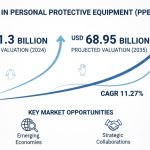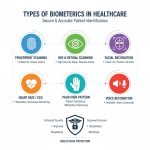2026: The Year Recycled Plastics Become Mainstream — Driving Circular Growth and High-Value Partnerships Worldwide.
Introduction
The global Recycled Plastic Market is entering a phase of accelerated momentum, powered by environmental regulation, corporate sustainability mandates, and rising demand for circular materials. A growing emphasis on reducing virgin plastic use, extended producer responsibility (EPR) policies, and innovations in recycling technologies are reshaping how plastics are sourced, processed, and reused. This release highlights the 2024 market baseline, the projected trajectory through 2035, segment-level insights, regional dynamics, key industry players, recent developments, and forward-looking analyst views including potential 2026 goals for leading companies.
Our comprehensive Recycled Plastic Market report is ready with the latest trends, growth opportunities, and strategic analysis. View Sample Report PDF.
Key Takeaways
- In 2024, the global recycled plastic market is estimated at USD 55.46 billion, with projections to reach USD 132.55 billion by 2035—reflecting a CAGR of 8.25% (2025–2035) per Vantage-cited sources.
- The market is benefiting from stricter regulations, corporate sustainability goals, and innovation in mechanical and chemical recycling methods.
- Asia Pacific is emerging as the fastest-growing region, while North America and Europe remain leaders in policy and infrastructure deployment.
- Major players are expanding advanced recycling capacity and forming strategic alliances.
- Beyond the baseline forecast, this release also offers an analyst perspective and suggests plausible 2026 goals for high-profile companies in the recycled plastics value chain.
Premium Insights
The recycled plastic market is increasingly influenced by stringent regulatory mandates—especially laws requiring minimum post-consumer recycled content in packaging. Corporations are adjusting sustainability strategies, often recalibrating goals in response to evolving cost structures and supply constraints. Technological innovation is accelerating: chemical recycling, depolymerization, and catalytic processes are improving yields from mixed or contaminated streams. Meanwhile, mechanical recycling remains dominant due to lower capital intensity. Integration of digital traceability, enhanced sorting technologies, and partnerships across waste collection ecosystems are emerging as differentiators.
According to the latest Vantage-cited data, the global recycled plastic market stood at USD 55.46 billion in 2024 and is projected to reach USD 132.55 billion by 2035, growing at a CAGR of ~8.25% from 2025 to 2035. This trajectory signals the intensifying role of recycled feedstocks replacing virgin plastic in various end uses—from packaging and automotive to construction and consumer goods.
The recycled plastics industry exhibits moderate to high fragmentation, with many regional recyclers and a few large integrated players. Entry barriers are rising due to capital investments in advanced recycling technologies, collection/sorting infrastructure, and securing feedstock quality. Major chemical and petrochemical companies are vertically integrating the recycling value chain to control upstream inputs. Meanwhile, smaller niche recyclers often specialize in particular polymers or localized feedstock streams. Strategic alliances, acquisitions, and licensing are shaping competitive advantage.
For Recycled Plastic Market Research Report and updates detailed: View Full Report Now!
What actually happens in 2026 — strategic narrative
Advanced recycling capacity goes commercial
Several announced projects (chemical/advanced recycling) come online or move into scale-up in 2026, converting previously hard-to-process waste streams into usable feedstock. That creates new, higher-value recycled resin supply and short-term volatility as markets integrate these sources.
Brands accelerate mandatory recycled content targets into procurement
After regulatory nudges and public scrutiny, major CPG and beverage companies increase contracted PCR (post-consumer resin) offtakes for 2026 and beyond. This reduces demand uncertainty for recyclers with certified food-grade or high-spec outputs.
Feedstock consolidation & quality control become competitive moats
Companies that secured long-term collection, sorting partnerships, or invested in next-gen sorting (optical, AI) saw improved margins. Informal collection remains important in many emerging economies but begins to integrate with formal systems via digital payments / incentives.
Regulatory tightening & standardization accelerates
More jurisdictions publish clear recycled-content standards and labeling rules, tightening greenwashing scrutiny. This benefits players who already meet certification and traceability requirements.
Price dynamics — partial parity in pockets
Where advanced recycling reaches scale and offtake contracts exist, recycled resin narrows the price gap to virgin feedstock; in other regions with scarce quality feedstock, spreads remain wide.
2026 — Risks & downside scenarios
- Feedstock quality problems and contamination stall scaling of high-value recycled outputs.
- Weak virgin polymer pricing (lower oil prices) temporarily suppresses recycled resin uptake.
- Delays in certification/food-grade approvals for chemically recycled materials slow adoption in beverages/food packaging.
- Political/regulatory uncertainty in emerging markets delays investment.
Product Insights
The recycled plastic market is segmented by product into PET, PE, PP, PVC, PS, and others. Among these, recycled PET (rPET) dominates due to its extensive use in packaging and bottles. Rising consumer awareness, brand sustainability goals, and government regulations mandating recycled content drive strong demand for rPET globally.
Source Insights
Based on source, the market includes post-consumer and post-industrial waste. Post-consumer plastics hold the largest share as governments and industries emphasize circular economy practices. Increasing recycling infrastructure, collection initiatives, and corporate commitments to reuse consumer waste significantly boost this segment’s contribution to the recycled plastics industry.
End-Use Industry Insights
By end-use industry, the market is categorized into packaging, building & construction, automotive, electrical & electronics, and others. The packaging sector leads due to the shift toward sustainable packaging materials and food-grade rPET adoption. Meanwhile, construction and automotive sectors increasingly integrate recycled plastics for durable, lightweight, and eco-efficient applications.
Regional Insights
North America Recycled Plastic Market Trends
North America is a mature market with strong regulatory drivers, consumption demand, and infrastructure. The U.S. leads adoption of EPR laws in certain states, and major brands are pushing recycled content mandates. Established recycling systems and collection networks support scale. But challenges such as feedstock contamination, sorting inefficiencies, and competition with low-cost virgin plastic persist. Adoption of chemical recycling is gradually increasing in response.
Europe Market Recycled Plastic Trends
Europe benefits from some of the world’s most aggressive regulatory mandates on recycled content and plastic packaging taxes. The EU’s circular economy and plastics strategy push member states to achieve high recycling targets and reduce landfill reliance. Many brands must comply across multiple countries with unified standards, which encourages networking between waste management, recyclers, and industry. However, cost pressures and competition among polymer types require optimization of supply chains.
Asia Pacific Recycled Plastic Market Trends
Asia Pacific is anticipated to lead growth over the forecast period. Rapid industrialization, rising consumer demand, and growing environmental awareness drive recycled plastic uptake, especially in China, India, and Southeast Asia. Policy reforms and import bans (e.g. on plastic waste) have spurred domestic recycling development. Challenges include uneven collection infrastructure, regulatory heterogeneity, and ensuring material quality to meet global standards.
Latin America Recycled Plastic Market Trends
Latin America is gradually scaling recycling capacity. Brazil and Mexico are regional hubs for both collection and processing. Growing interest from beverage, packaging, and consumer goods companies is pushing demand for recycled inputs. But limitations in segregated collection, informal waste sectors, and logistic costs in remote regions constrain growth. International investment and cross-border cooperation may accelerate development.
Middle East & Africa Recycled Plastic Market Trends
MEA is an emerging market with evolving opportunities. Gulf nations are investing heavily in waste infrastructure and circular economy initiatives, targeting plastic reuse and recycling. However, many countries lag in waste sorting, legislation, and recycling technology adoption. Local incentives, subsidies, and partnerships with global recyclers can catalyze growth, particularly for packaging and construction applications.
Key Recycled Plastic Company Insights
Top Recycled Plastic Companies
- Veolia
- Plastipak Holdings Inc.
- Biffa PLC
- Alpek
- MBA Polymers
- Cabka
- Jayplas
- Loop Industries Inc.
- Republic Services Inc.
- KW Plastics
- Stericycle
- Far Eastern New Century Corporation
- Indorama Ventures
- Remondis SE & Co. KG
- WM Intellectual Property Holdings LLC
- Waste Connections
- Clean Harbors Inc.
- Covetsro AG
Recent Developments
- In July 2025, Veolia announced a £70 million investment to build its largest plastic recycling facility in the UK—a closed-loop plant converting PET trays into food-grade materials, targeting operation by early 2026.
- In November 2024, ExxonMobil committed over USD 200 million to expand advanced recycling capacity in Baytown and Beaumont, Texas, with operations expected to begin in 2026.
2026 Goals for Key Players
- ExxonMobil: Achieve annual recycled feedstock processing of 1 billion pounds (~454,000 metric tons) via expanded advanced recycling sites (Baytown/Beaumont), in line with announced investments.
- ALPLA Group: Increase global recycling capacity by 30%, expand partnership networks in Asia & Latin America, and aim for >20% of its polymer packaging to be derived from recycled content by 2026.
- Veolia: Commission the UK closed-loop PET plant in 2026 (as planned), expand further closed-loop recycling across Europe, and secure offtake deals with major FMCG brands.
Analyst Insight & 2026 Goals for Leading Companies
- Feedstock chain control will become a competitive moat: companies that secure long-term collection partnerships, invest in sorting infrastructure, or integrate waste management will better manage cost and quality.
- Policy alignment and certification (e.g. PCR standards, labeling) will increasingly influence buyer decisions, especially for consumer goods brands.
- Geographic expansion into Asia, Latin America, and Africa with localized recycling hubs will help capture growth and reduce logistics burdens.
Recycled Plastic Market Report Scope
According to Vantage Market Research press release centers on the global recycled plastic market drawing from Vantage-referenced forecasts (2024 base, 2035 target, 8.25% CAGR). Segmentation covers Product, Source, and End Use Industries. Regional insights span North America, Europe, Asia Pacific, Latin America, and Middle East & Africa. Competitive landscape, recent developments, and strategic outlook—including analyst commentary and potential 2026 goals for key firms—are provided. Note: recent developments and corporate goals are supplemented from public sources beyond the Vantage dataset.
Market Dynamics
Driver
Key drivers include regulatory mandates and standards (e.g., laws requiring use of post-consumer resin), corporate sustainability commitments to reduce virgin plastic use, and consumer pressure for eco-friendly products. Corporate demand for recycled input in packaging, automotive, and consumer goods is accelerating. Moreover, advances in recycling technology and scale economies are making recycled plastics more cost-competitive.
Restraint
Major restraints include feedstock quality and contamination, which degrade material value and limit applications. Insufficient collection and sorting infrastructure (especially in emerging markets) cause throughput losses. Capital intensity for advanced recycling (chemical, pyrolysis, depolymerization) and uncertain regulatory support present financial risks. Volatility in virgin plastic pricing also squeezes margins.
Opportunity
Opportunities abound in upgrading low-value waste streams, converting layered/multilayer plastics, and scaling chemical recycling to handle mixed or impure waste. Integration with brands producing large plastic volumes (Coca-Cola, Pepsi, Unilever) via offtake agreements or joint ventures offers revenue certainty. Developing regional recycling hubs in growth markets (Asia, Latin America) presents first-mover advantage. Innovations in catalyst, additive removal, and digital traceability can expand addressable markets.
Challenges
Significant challenges lie in scaling advanced recycling technologies, ensuring product consistency and certification (e.g., food-grade standards), and navigating global regulatory variation. Matching supply and demand across geographies, managing logistic costs, and securing capital for infrastructure buildout pose hurdles. Moreover, companies must balance environmental claims without greenwashing scrutiny, especially under evolving ESG frameworks.
Global Recycled Plastic Market Report Segmentation
- By Product: Polyethylene (PE), Polyethylene Terephthalate (PET), Polypropylene (PP), Polyvinyl Chloride (PVC), Polystyrene (PS), Other Products
- By Source: Bottles, Films, Foams, Fibers, Other Sources
- By End Use Industries: Packaging, Building & Construction, Electrical & Electronics, Textiles, Automotive, Other End-Use Industries
- By Region: North America, Europe, Asia Pacific, Latin America, Middle East and Africa
Frequently Asked Questions
Q1. What was the market size in 2024 and what is it forecast to reach by 2035?
A: According to Vantage-cited data, 2024 market size is USD 55.46 billion, with projection of USD 132.55 billion by 2035.
Q2. What is the anticipated compound annual growth rate (CAGR) from 2025 to 2035?
A: 8.25%.
Q3. Who are the key companies driving the recycled plastic market?
A: Prominent names include ALPLA Group, Veolia, and upstream chemical and petrochemical firms integrating recycling (e.g. ExxonMobil).
Q4. What are the major drivers, restraints, and opportunities?
A: Drivers are regulatory pressure, sustainability goals, and innovation. Restraints include feedstock constraints and capital costs. Opportunities lie in advanced recycling, new feedstocks, and strategic partnerships.
![[Market Research Reports] – Research Google News Blog | VMR.Biz](https://www.vmr.biz/wp-content/uploads/2022/12/logo-removebg-preview.png)











